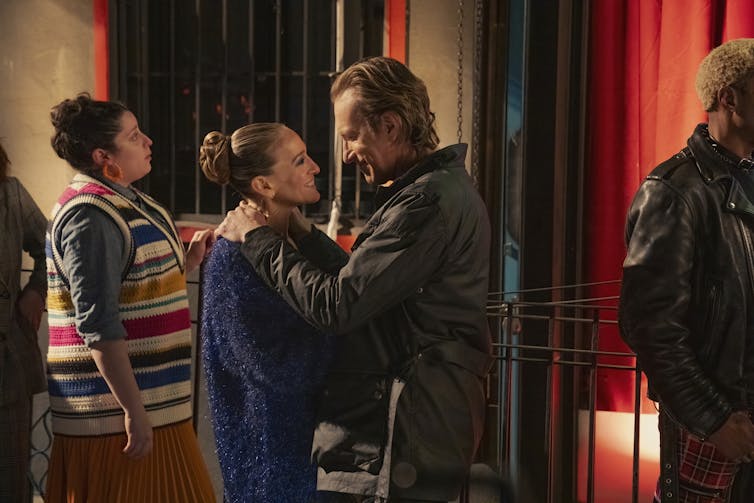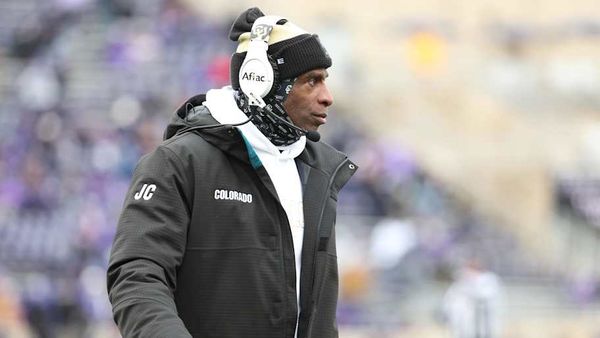
Warning: This article contains spoilers about ‘And Just Like That…‘
Middle-aged women don’t have sex — or that’s what popular media might have us believe. But And Just Like That…, the HBO Max sequel to the seminal series Sex and the City, offers a markedly different portrayal.
The show presents a perspective of middle-aged women’s lives and identities that aligns more closely with studies demonstrating that 73 per cent of women in midlife are sexually active.
Premiering in late 2021, And Just Like That… resumes the story of Carrie Bradshaw (Sarah Jessica Parker), Miranda Hobbes (Cynthia Nixon) and Charlotte York (Kristin Davis) 11 years after the second Sex and the City feature. Now in their 50s, the characters confront the realities of friendship and aging.
The series explores their evolving identities and relationships, highlighting the challenges and successes of midlife. With Season 3 set to release on May 29, And Just Like That… continues to provide a platform for the representation of middle-aged women as multifaceted individuals who assert their sexual agency.
Representation still lags behind
While And Just Like That… breaks new ground by shining a light on the lives and experiences of middle-aged women, the industry as a whole has a long way to go.
Research from the Geena Davis Institute examining representation over a 10-year period found that in top-grossing films and popular television shows, less than 25 per cent of characters were over the age of 50.
Those who did appear were often depicted using elderly tropes. They were less likely to be featured in romantic story lines, show affection or be shown in intimate contexts. They were also more likely to be men.
In fact, two-thirds of characters aged 50 and older in streaming television, and four out of five in film, were men. Taken as a whole, with some recent notable exceptions, women over 50 are rendered largely invisible in media. In stories about romance and sex, they rarely take centre stage.
This lack of representation not only impacts societal perceptions about what it means to be a woman over 50, but also presents missed opportunities for businesses, advertisers and filmmakers to showcase authentic and relatable stories that resonate with audiences.
Challenging stereotypes about older women
As consumer researchers and gender scholars, we were interested in understanding whether And Just Like That… challenges or reinforces expectations about middle-aged women in consumer culture.
In our previous research on Sex and the City, we found that consumption practices played heavily into character identity development, particularly in resolving and creating tensions around sexuality, domesticity and authenticity.
The original series drew audiences in with its portrayal of four young single women navigating sex and relationships in New York City. But to understand the sexual scripts for these characters as they are reprised years later, we turned to feminist gerontology, which highlights the ways social norms and structures around age and gender influence the aging experience.
Our content analysis of And Just Like That…‘s first season identified themes that reflect significant tensions around identity, liminality and sexual behaviours in middle age.

Carrie, as a central figure, provides a good example. Her journey highlights tensions between societal expectations and aging identity. Her fashion choices, once celebrated, now face scrutiny, reflecting ageist attitudes towards what is deemed appropriate for older women.
In one episode, Carrie wears a floor length white tulle tutu, reminiscent of her younger days. While fans might see this as a nostalgic nod to her past, the stares of onlookers suggest they regard this attire as age-inappropriate. Writing in the New York Times, English professor Rhonda Garelick notes that this tutu looks “off” on her, highlighting societal pressure on aging women to conform to certain standards.
Middle-aged, single and seen
In the pilot episode of And Just Like That…, Carrie’s husband, John “Big” Preston, dies in her arms of a heart attack in their apartment. In the aftermath, Carrie hires realtor Seema Patel (Sarita Choudhury) to sell the home and returns to her iconic Sex and the City apartment and her quest for love.
Over drinks, Carrie calls Seema “brave” for “still” looking for love at age 53. Seema replies that although she has yet to meet the love of her life, that fact isn’t tragic — and neither is Carrie’s loss, because she had many good years with Big.

Seema challenges the stigma of women’s singledom in middle age with her entitlement to sexual pleasure, personal growth and a belief that love is always possible. By addressing these themes, And Just Like That… contributes to discourse on aging and the right of women to be visible at any age.
Media in contemporary society not only reflects culture, but also affects it. Through representation and storytelling, media has the transformative power to showcase the full lives and identities of individuals, giving legitimacy to the full range of possibilities for people.
Since sexuality — the capacity for sexual thoughts — is an important influence on sexual well-being, women over 50 should not be erased from realistic narratives. They deserve to be seen and recognized as living vibrant, multi-dimensional lives.
The authors do not work for, consult, own shares in or receive funding from any company or organisation that would benefit from this article, and have disclosed no relevant affiliations beyond their academic appointment.
This article was originally published on The Conversation. Read the original article.







